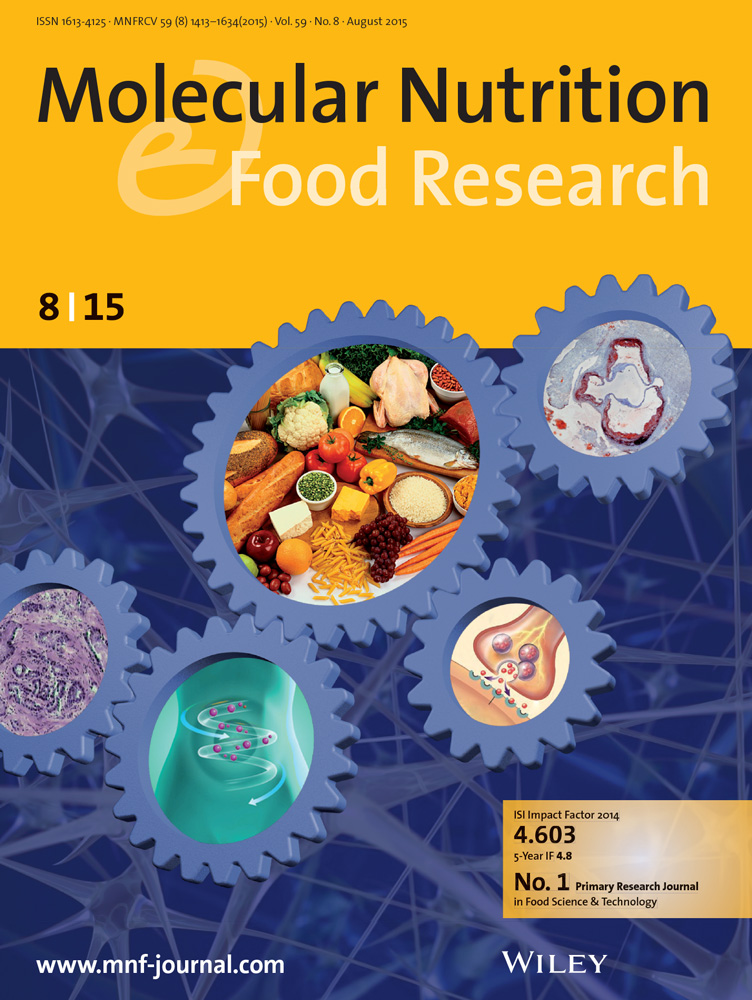Chlamydomonas reinhardtii (Red) Rich in Protoporphyrin IX Exerts Anti-Diabetic Effects in Liver Tissue.
IF 4.5
2区 农林科学
Q1 FOOD SCIENCE & TECHNOLOGY
引用次数: 0
Abstract
The metabolites derived from microalgae have been attributed with various nutritional and medicinal properties. Therefore, our research focused on exploring the potential benefits of Chlamydomonas reinhardtii (red) for type 2 diabetes mellitus (T2DM) patients. Mice were subjected to a high-fat diet and low-dose streptozotocin injection to develop T2DM. These diabetic mice were then treated orally with either 1% sodium carboxymethylcellulose or C. reinhardtii (red) at 1-3 g/kg BW/day for 4 weeks. Liver sections were stained with hematoxylin-eosin and oil red to assess pathological changes and lipid deposition. Serum inflammatory factors were measured using ELISA, and oxidative stress indicators were evaluated with commercial kits. C. reinhardtii (red) treatment significantly improved fasting glucose, body weight, triglycerides, LDL-C, and enhanced glucose tolerance and insulin sensitivity. It also reduced liver damage and lipid deposition. The treatment decreased G-6-Pase and PEPCK protein expression and modulated the SOCS2/JAK2/STAT5 pathway. RNA-seq analysis showed 972 differentially expressed genes in treated diabetic mice. KEGG analysis indicated the involvement of lipid metabolism, inflammation, and multiple pathways in the effects of C. reinhardtii (red). C. reinhardtii (red) might counteract T2DM by inhibiting gluconeogenesis and modulating key metabolic pathways, suggesting its potential as a dietary intervention for patients.富含原卟啉IX的莱茵衣藻(红色)在肝组织中的抗糖尿病作用
微藻代谢产物被认为具有多种营养和药用价值。因此,我们的研究重点是探讨莱茵衣藻(红色)对2型糖尿病(T2DM)患者的潜在益处。小鼠接受高脂肪饮食和低剂量链脲佐菌素注射以发展为T2DM。这些糖尿病小鼠分别以1-3 g/kg体重/天的剂量口服1%羧甲基纤维素钠或莱茵草(红色),持续4周。肝切片采用苏木精-伊红和油红染色,观察病理变化及脂质沉积情况。ELISA法检测血清炎症因子,商用试剂盒检测氧化应激指标。C. reinhardtii(红色)治疗显著改善了空腹血糖、体重、甘油三酯、LDL-C,并增强了葡萄糖耐量和胰岛素敏感性。它还能减少肝损伤和脂质沉积。该处理降低了G-6-Pase和PEPCK蛋白的表达,调节了SOCS2/JAK2/STAT5通路。RNA-seq分析显示972个差异表达基因。KEGG分析表明,脂质代谢、炎症和多种途径参与了莱茵梭菌的作用(红色)。C. reinhardtii(红色)可能通过抑制糖异生和调节关键代谢途径来对抗2型糖尿病,这表明它有可能作为患者的饮食干预手段。
本文章由计算机程序翻译,如有差异,请以英文原文为准。
求助全文
约1分钟内获得全文
求助全文
来源期刊

Molecular Nutrition & Food Research
工程技术-食品科技
CiteScore
8.70
自引率
1.90%
发文量
250
审稿时长
1.7 months
期刊介绍:
Molecular Nutrition & Food Research is a primary research journal devoted to health, safety and all aspects of molecular nutrition such as nutritional biochemistry, nutrigenomics and metabolomics aiming to link the information arising from related disciplines:
Bioactivity: Nutritional and medical effects of food constituents including bioavailability and kinetics.
Immunology: Understanding the interactions of food and the immune system.
Microbiology: Food spoilage, food pathogens, chemical and physical approaches of fermented foods and novel microbial processes.
Chemistry: Isolation and analysis of bioactive food ingredients while considering environmental aspects.
 求助内容:
求助内容: 应助结果提醒方式:
应助结果提醒方式:


